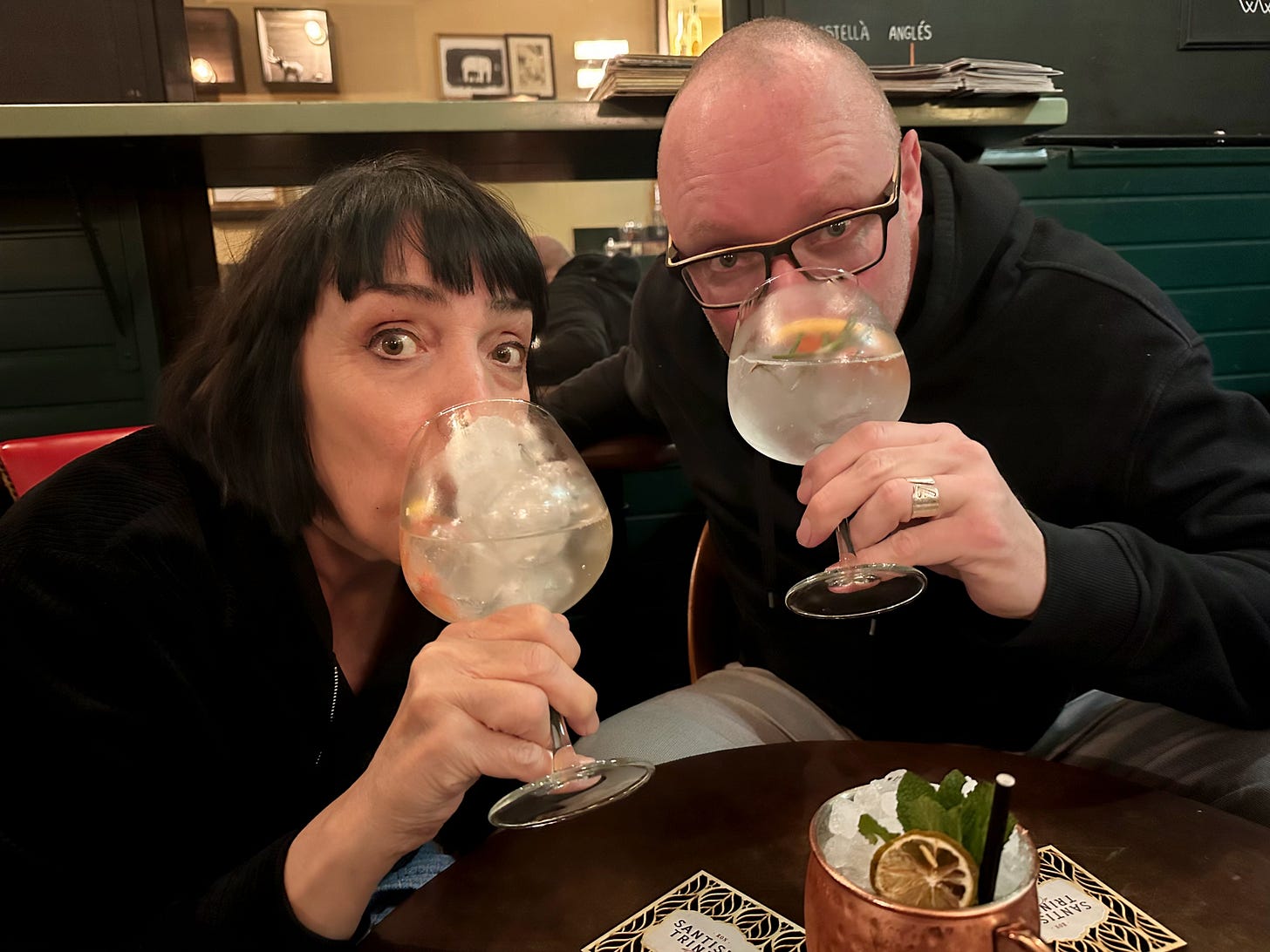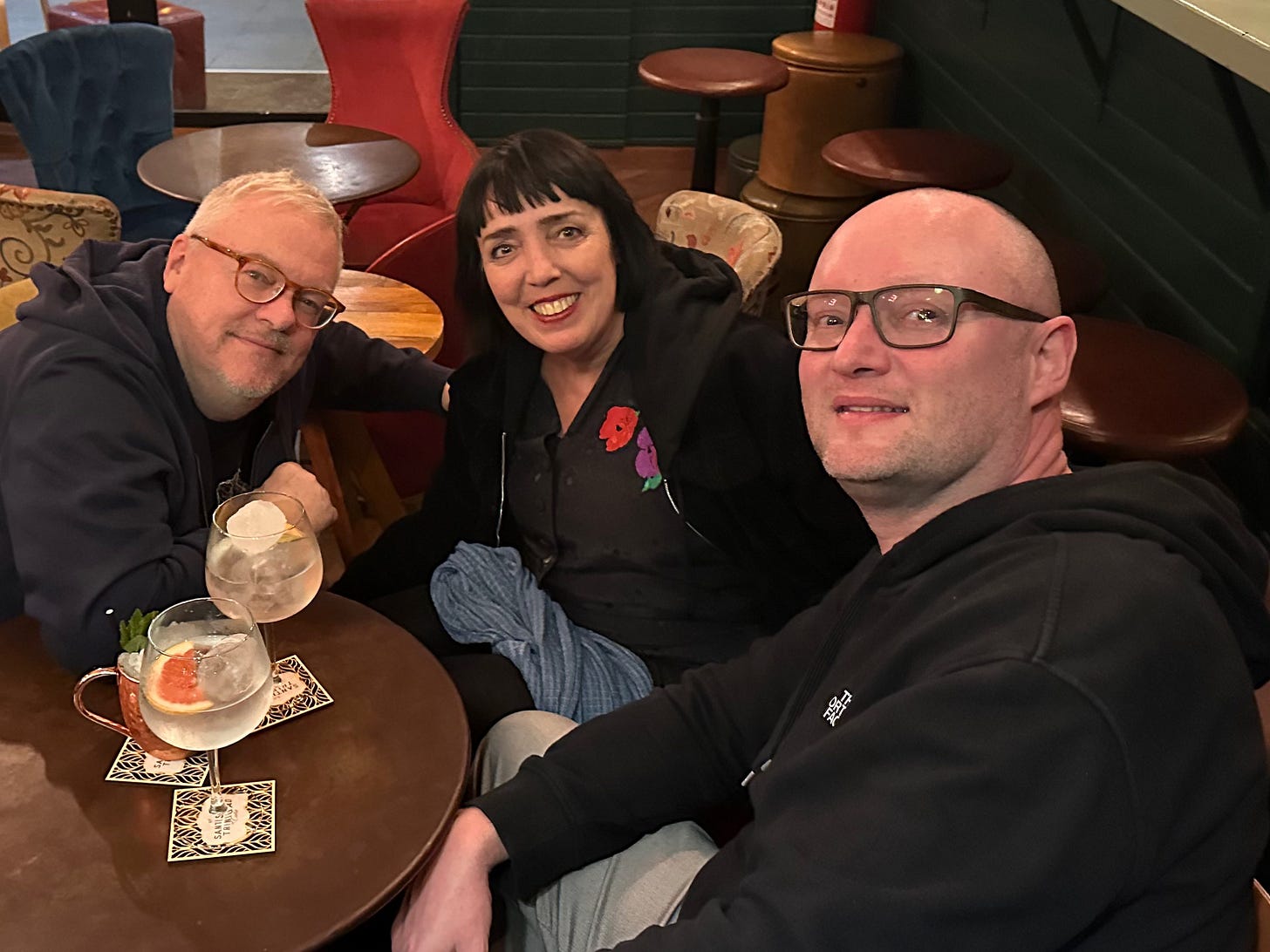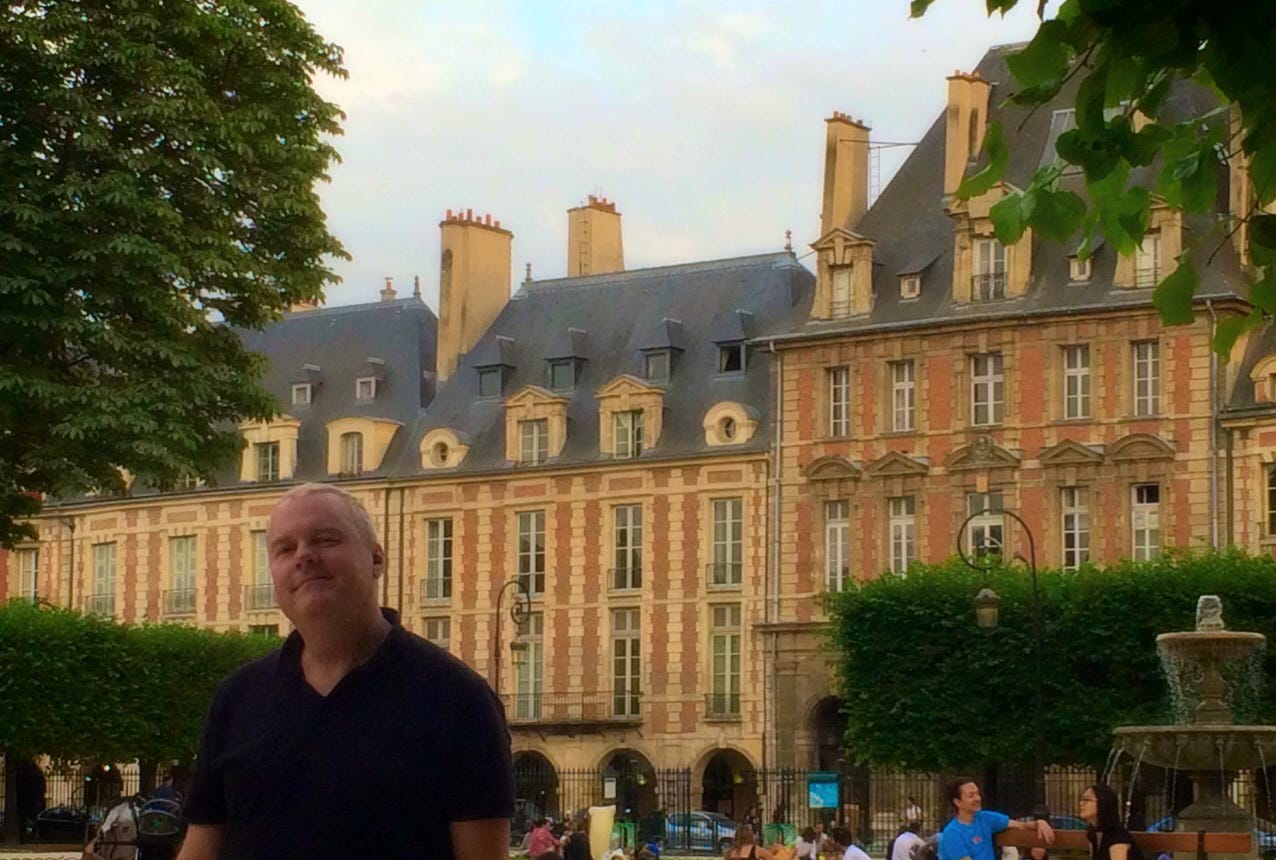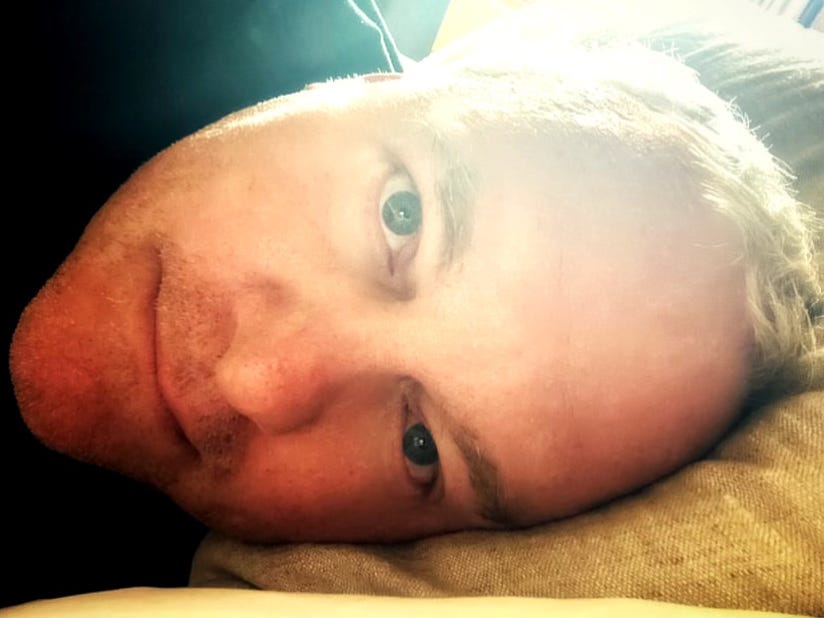“The fundamental things apply as time goes by.”—Jazz lyrics, written by Herman Hupfield, featured in the monumental film, Casablanca (1942), starring Humphrey Bogart and Ingrid Bergman
(Humphrey Bogart offers Ingrid Bergman a proper but barely adequate kiss on the cheek, in the classic film, Casablanca.)
Last night, after a round of limey tonics at the Elephant Gin Bar in Barcelona, my dear friend Mariël and her husband Joost, were wondering just exactly how the three of us should consecrate such a lovely late evening of laughter and libations with a proper goodbye.
I extended a light kiss on the cheek to Mariël, but was jokingly admonished by her for stopping at only two.
“That’s the custom in Spain and most of Catalunya,” I exclaimed. “At least from what I understand,” I stammered.
The kissing custom here in Barcelona is known as besar en las dos mejillas (kisses on both cheeks) or dar dos besos (give two kisses). And oddly enough, the tradition of two kisses has its roots in the Catholic Church where parishioners were often encouraged by their local monsignors to use the custom of cheek kissing twice to offer one another a sign of peace and goodwill. Y solamente dos!
(I met Joost and Mariël through my Spanish Language Class here in Barcelona and since February of this year, we have been become essential friends!)
“That may be true,” Mariël proceeded. “ But in the Netherlands, if you’re out with cherished friends, the tradition is to kick it up a notch—as in three pecks, back and forth, on the cheeks, your lips barely brushing the skin.”
Joost agreed, but added, “Most Dutch men don’t give into these playful displays of affection,” and demonstrated with me by bending down and placing his arms solidly around my shoulders. “See, in Holland, men just give one another a firm hug.”
For a few moments afterwards, walking back to my apartment on Calle Verdi, it all flashed back to me. I remembered so many years ago, being young and uncertain about everything and teaching English in the fifteenth arrondissement in Paris. It was my friend Abra who was about to introduce me to a group of her close companions, some of whom were with her all throughout architecture school at the Sorbonne.
“Now when you first greet them Gerard,” she instructed as though she were writing a definitive guide to French etiquette, “it’s natural that you should pause for a moment, to decide which person’s cheek to start with, and normally you kiss the person on their right cheek followed by a second peck on their left.”
“And will I always know who wants a kiss,” I inquired. “I mean, is it safe to assume that everyone kisses casually like this on a first meeting in France?”
“In social situations outside of work, it’s almost mandatory,” Abra winked, “It’s like a delicate dab of butter on a baguette, you’ll see. It’s the same in Italy too, but amongst Italians it’s considered a sign of genuine affection and deeper connection, the Italians mean business.”
And with that, we greeted three of her close companions in front of our favorite store in Paris, La Samaritaine, for a moment of shopping and café noisettes. I felt serenely continental and warmly embraced by her two women friends, Cecilia and Régine, but with her stylish and handsome friend Bruno, I became self-conscious and flustered and hopelessly lost my composure.
Smiling awkwardly, I over enthusiastically dove in to each of Bruno’s bearded cheeks, slathering a mouthful of my own version of Midwestern butter on both sides of his virile face. His eyes grew wide with a kind of incredulous shock.
It was at that moment I realized I had been too ambitious, too green, too American—slowly he began dabbing off my drool from his damp cheeks with a tissue, when he finally thought to sweetly utter, “Welcome to France, Gerard.”
I had made my first, true-to-life, cultural faux pas.
Later, I discovered that cheek kisses, especially in France and particularly between men, are not actual lip to cheek pecks, but rather a slight but breezy cheek to cheek graze, and sometimes they are accompanied by the subtle smack of lips in the air.
(The ultimate powerhouse movie couple, Streisand and Redford embrace on the street for one last time in the romantic film, The Way We Were.)
Kissing customs aside, what I love so much about living here in Spain, is that there seems to be a larger population of Europeans and otherwise, who are willing to participate in a myriad of ways to touch one another in social situations—to connect with cheek kisses, or hugs, or even arms around shoulders, as they stroll down the beach promenades. It was gestures like these that I found so captivating in the romantic movie, The Way We Were.
Perhaps one of the greatest love weepies ever filmed, Barbra Streisand meets heartthrob Robert Redford and her world turns upside down. The two are so utterly mismatched at the beginning, (Streisand as Katie, the overzealous, political challenger, and Redford, as Hubbel, the WASP-ish military fellow), that you know it’s going to fail from their first encounter, but you can’t help sinking into their genuinely amorous moments. Still, it’s Streisand, who with perfect comedic timing and charm, unzips the smoky erotic moments that sometimes underlie simple hugs and formalized gestures of social kisses.
Raised in a Polish-Catholic family, I remember a good share of hugs and kisses from my extended family. Often times it was even trustworthy kisses on the lips from relatives, both grandma and grandpa, uncles and aunts, and even a scattering of Polish cousins—hugs and close contact, that was all entirely innocent, appropriate, and purely loving.
But as time ran ahead, and the older generations passed on, it seems to me there was less kissing, less hugging. It was as though a kind of hardened stoicism had somehow crept in, American society was mandating (understandably) no touch zones in schools and at the workplace, talk shows were focused on rampant childhood sexual abuses, and everyone was suddenly too cautious, too savvy, too hip, and especially among the men, too manly, to embrace anymore.
I am self-aware enough to understand, that because I was raised for a short period of time at the Catholic Charities orphanage in Chicago, I was severely touch deprived. Studies now reveal that children who were starved with affection early on, develop more social anxiety, alienation habits, and even depression. So I’ve found myself overly inclined to touch and then having to pull back a bit, whenever I’m in close physical proximity to others, respecting that a good number of folks are resistant to even a warm gesture of affection from a friend or even a relative.
How did all this “baggage inspection” get generated from a simple observation of a harmless European custom of kissing and back pats that asserts congeniality and affability? I won’t begin to summon up all the nuances and complexities that this subject touches upon for me—or the question this topic begs which is, is a kiss always just a kiss?
However it strikes me that sometimes even well-intentioned spontaneity with kissing can be restrained or better yet, tempered with certain social customs, like those I now embrace here in Catalunya, traditions that keep things in balance. In the end, it feels so liberating to live among citizens who celebrate life with consistent patterns of touch. It seems healthier to me to engage with at least a modicum of socially endorsed kisses, hugs, and even communal dancing, than to wander about the world without these practices of healthy acknowledgment and social bonding.
(During Eastertime, traditional dances such as La Sardana are celebrated in Barcelona—here, this Catalan folk dance is taking place in Diamond Square, in my neighborhood of Gràcia, symbolizing unity and community spirit among participants.)
One of the greatest compliments I get whenever I complete a writing workshop these days, is when a participant will sensitively ask, “Can I give you a hug?”
It’s a way of saying, look—we don’t know each other so well, but what you offered here deserves more than just a word, it deserves human-to-human contact, a heartfelt expression that recognizes something truly meaningful was exchanged here in this shared moment, and that I trust you, you brought us back to the foundations of humanity and we really are connected, we matter.
I know that I need that kind of affirmative connection from people, which is one of the reasons I moved abroad. And I believe that we all need these tactile affirmations. I feel so blessed to feel these moments of connection through my writing and teaching, and blessedly, with my personal relationships.
Are you getting your daily dose of healthy relational stimulus? Come over to Barcelona, I can show you how it’s done.
Resources
A fresh and frothy perspective on foreign kisses—you can get “cheeky” here with this wonderful blog, Bistro Chic
The ultimate in romantic classics, both of these films hold up remarkably well and allow a deeper examination of how touch is regulated in both social and romantic situations—they are both time-honored favorites of mine: Casablanca and The Way We Were
(All photos courtesy of Gerard Wozek or in alignment with Creative Commons.)












I truly enjoyed this piece. I think many Americans are hesitant to show this type of affection, but I'm glad Europeans do. I experienced it while in Spain meeting a few friends my husband had made when he visited there 6 years ago. I think we did a three-peat -- right, left, right, as I recall. It kind of caught me off guard at first, but didn't take me long to feel right at home. Thanks Gerard.
Hi Gerry,
What a fantastic essay! I love the ending, and the whole piece is wonderful. I never thought of kissing customs until reading your article. When you describe the cheek to cheek kiss, what I think of is the Olympics, where the person who puts the medals on the world's best athletes often kisses each cheek, and it's the way you explained, like a light brush on each cheek. It always looks so classy.
Here in the United States, we tend to be uptight about affection. At a weekly support group we hug each other a lot and hold hands at the end of our meeting. It took awhile for me to get used to, but it's something I now look forward to.
I have to watch Casablanca one of these days. The Way We Were is a beautiful story.
Thank you for a wonderful piece on an important custom.